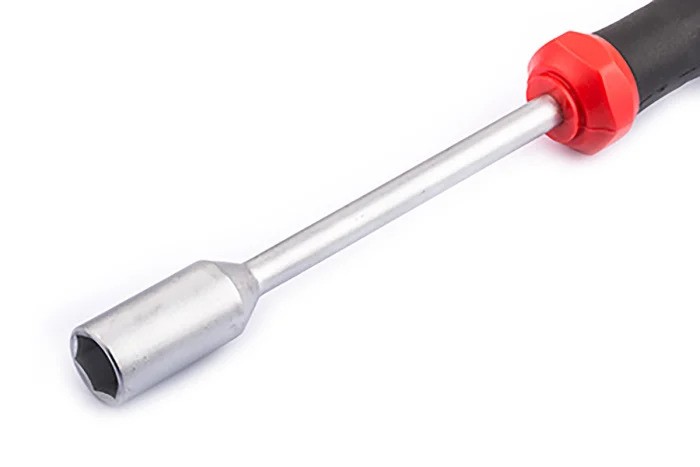
Nut drivers
What Makes Nut Drivers Essential Tools in Precision Work?
Nut drivers are essential hand tools crafted to install or remove hex-head nuts and bolts. They resemble screwdrivers but feature a socket head designed to fit over hexagonal fasteners. These tools are widely used in precision work, especially in electronic repair, appliance servicing, and mechanical maintenance.
A nut driver offers control, access, and efficiency, making it an ideal alternative to pliers or adjustable wrenches when handling smaller nuts. They are especially useful in jobs requiring repeated or delicate fastening without damaging sensitive components.
When Are Nut Drivers the Right Choice?
Nut drivers excel in situations where precision and access are critical. Their slim design allows them to reach fasteners located in recessed areas, behind panels, or inside compact casings.
Typical use cases include:
- Working with printed circuit boards in electronics
- Fastening components inside enclosures or cabinets
- Installing HVAC units or terminal blocks
- Adjusting small parts in automotive dashboards
- Handling light mechanical repairs in household devices
They are indispensable in toolkits for technicians who need to work on confined assemblies without compromising efficiency or safety.
What Are the Key Advantages of Using Nut Drivers?
Nut drivers simplify fastening tasks by delivering consistent torque and minimizing hand strain. They are specifically tailored for tasks that require control over speed and pressure.
Advantages include:
- Easy to manoeuvre in tight or awkward spaces
- Minimized risk of overtightening
- Better grip on small fasteners compared to traditional tools
- Less wear on nuts and bolts due to snug socket fit
- Increased speed in repetitive tightening tasks
- Comfortable handle design for extended use
In electronic repair or precision maintenance, these benefits translate to improved safety, accuracy, and productivity.
Which Nut Driver Types Are Available?
There are various nut driver types designed to handle specific needs. Selecting the right variant depends on factors such as torque requirement, space constraints, and the type of work environment.
Common types include:
- Hollow Shaft Nut Drivers: Enable access to long bolts or extended studs without obstruction.
- T-Handle Nut Drivers: Designed to increase torque with minimal wrist strain.
- Flex Shaft Nut Drivers: Provide flexible access to angled or difficult fastener locations.
- Insulated Nut Drivers: Suitable for working near live electrical circuits with voltage protection.
- Magnetic Tip Nut Drivers: Offer convenience by securely holding nuts in place during alignment.
- Interchangeable Head Nut Drivers: Allow users to switch between sizes using one handle.
Each type brings unique features that make them suited for different tasks and operational conditions.
How Do You Select the Best Nut Driver for the Job?
Choosing the right nut driver ensures tool efficiency and prevents damage to components. It is important to consider several technical and ergonomic factors before purchasing.
Selection criteria include:
- Socket Size: Must match the specific nut dimensions for a tight fit.
- Handle Design: Look for ergonomic, slip-resistant handles for better control.
- Material Strength: Choose drivers made with alloy steel or chrome vanadium for durability.
- Tool Length: Consider extended shafts for recessed areas.
- Electrical Insulation: Essential for work involving electrical connections.
- Head Type: Fixed or interchangeable depending on the required flexibility.
Investing in high-quality nut drivers results in long-term performance, reduced tool wear, and fewer on-site issues.
What Materials Are Typically Used in Nut Driver Construction?
The choice of materials in nut driver construction affects tool reliability, weight, and corrosion resistance. Professional-grade nut drivers often feature a combination of robust metal alloys and ergonomic handle materials.
Typical material compositions:
- Steel or Chrome Vanadium Shafts: Offer durability and resistance to high torque.
- Hardened Tips: Prevent rounding of fastener edges.
- Plastic or Rubber Handles: Improve grip and reduce hand fatigue.
- Magnetised Socket Ends: Help hold fasteners in position for improved handling.
These materials are selected to balance strength, safety, and usability across demanding environments.
What Are the Common Sizes for Nut Drivers?
Nut drivers are available in both imperial and metric measurements. The size range typically covers most fasteners used in electronics and light mechanical assemblies.
Standard sizes include:
- Metric: 5mm, 6mm, 7mm, 8mm, 10mm
- Imperial: 3/16″, 1/4″, 5/16″, 3/8″, 7/16″
Selecting the correct size prevents damage to nuts and extends tool life. A comprehensive set usually includes both size systems for flexibility across global standards.
How Are Nut Drivers Used in Different Industries?
Nut drivers are not limited to a single sector. Their utility spans multiple industries, each requiring tools that deliver speed, precision, and safe fastening.
Industries where nut drivers are commonly used:
- Electronics Manufacturing: For securing boards, panels, and wiring assemblies
- Automotive Repair: For dashboard, electrical, and engine component adjustments
- HVAC and Plumbing: For assembling duct systems and fittings
- Telecommunications: For tightening frames, cabinets, and switchboards
- Facility Maintenance: For light-duty tasks like appliance servicing or equipment installation
This versatility makes nut drivers a must-have for field technicians and workshop professionals alike.
What Tips Help Extend Nut Driver Life?
Proper care and usage practices enhance the durability of nut drivers. Following recommended maintenance guidelines can reduce wear and avoid tool failure during critical operations.
Tips for tool longevity:
- Wipe clean after every use to prevent corrosion
- Avoid using nut drivers with impact tools unless designed for such use
- Store in dry conditions to preserve insulation and materials
- Match the socket size accurately to the fastener
- Inspect for cracks or loose shafts periodically
Treating your nut drivers with care ensures they remain accurate and dependable for years of service.
Final Thoughts: Are Nut Drivers a Smart Investment for Technicians?
Nut drivers deliver unmatched convenience for handling fasteners in small-scale, precision, and electronic environments. Their ergonomic design, accuracy, and size-specific compatibility make them far superior to traditional tools in these scenarios. Whether performing a simple repair or assembling sensitive equipment, nut drivers provide a reliable solution that saves time and improves work quality. For technicians, engineers, and hobbyists, having a diverse set of nut drivers in the toolkit is not just beneficial, it is essential for getting the job done right.



